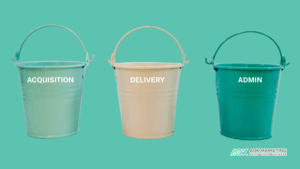Introduction: Why This Distinction Matters
In marketing, two terms are often used interchangeably—but they shouldn’t be. Brand equity and brand awareness are not the same. While both influence how customers perceive your brand, they serve different purposes and drive different results.
If you’re trying to build a recognizable and trusted brand that converts, retains, and grows over time, you need to understand what sets brand equity apart from brand awareness—and how to strategically grow both.
What Is Brand Awareness?
Definition:
Brand awareness is the degree to which consumers recognize or recall a brand. It answers the question: Have people heard of you?
Examples of high brand awareness:
-
A customer immediately thinks of Nike when someone mentions running shoes.
-
You can recall the color scheme and logo of Coca-Cola without seeing it.
Types of Brand Awareness:
-
Aided Awareness: Consumers recognize your brand when prompted.
-
Unaided (Top-of-Mind) Awareness: Consumers mention your brand without being asked.
Why Brand Awareness Matters:
-
It’s the foundation of the marketing funnel.
-
Customers are more likely to click on or consider brands they’ve heard of.
-
Strong awareness lowers cost-per-click (CPC) and increases click-through rate (CTR) in advertising.
What Is Brand Equity?
Definition:
Brand equity is the perceived value of your brand in the eyes of consumers. It reflects the emotional and financial strength your brand holds.
It answers the question: Do people trust, value, and prefer your brand over others?
Key Components of Brand Equity:
-
Brand Loyalty – Will customers choose your brand repeatedly?
-
Perceived Quality – Do customers see your product as superior?
-
Brand Associations – What feelings, images, or experiences come to mind with your brand?
-
Brand Assets – Trademarks, reputation, and proprietary technologies.
Why Brand Equity Matters:
-
It allows you to charge premium prices.
-
It reduces churn and increases customer lifetime value (LTV).
-
It builds resilience during economic downturns or PR challenges.
Brand Equity vs. Brand Awareness: Side-by-Side Comparison
| Aspect | Brand Awareness | Brand Equity |
|---|---|---|
| Definition | Recognition or recall of a brand name | Perceived value and preference for the brand |
| Focus | Visibility and recall | Trust, loyalty, and perceived quality |
| Stage | Top of the funnel | Full funnel, especially retention and loyalty |
| Impact on Sales | Increases likelihood of first interaction | Increases conversion, repeat purchase, and advocacy |
| Metrics to Track | Impressions, reach, branded search volume | NPS, repeat purchase rate, customer reviews |
How Brand Awareness Builds the Foundation
Awareness is often the first goal for new or growing brands. It’s about making sure people know your name, what you offer, and how to find you.
Tactics to Increase Brand Awareness:
-
Social media ads and influencer partnerships
-
Podcast sponsorships and brand collaborations
-
SEO-driven content marketing
-
Outdoor advertising (billboards, transit ads)
-
Public relations campaigns
Example:
A DTC skincare brand might launch TikTok videos with creators to generate viral buzz. The content may not drive immediate conversions, but it establishes awareness—so when shoppers see that brand in a store, they’re more likely to consider it.
How Brand Equity Creates Long-Term Growth
Once you’ve captured attention, brand equity determines whether that awareness turns into action and advocacy.
Tactics to Build Brand Equity:
-
Consistent product quality and customer service
-
Social proof: testimonials, reviews, and case studies
-
Ethical practices and values-based marketing
-
Brand storytelling that builds emotional connection
-
Loyalty programs and long-term engagement strategies
Example:
Apple doesn’t just have awareness—it has deep equity. Customers trust its design, ecosystem, and values. That’s why millions upgrade year after year—even when competitors offer similar or cheaper devices.
Can You Have One Without the Other?
Yes—but it’s risky.
High awareness without equity leads to lots of attention with little conversion. People may know your name but associate it with poor quality or lack of relevance.
High equity without awareness means people love your brand—but not enough people know it exists, limiting growth and reach.
The sweet spot:
The strongest brands invest in both. They’re recognizable and respected.
Which One Should You Prioritize First?
If you’re a new brand:
Start with awareness. You can’t earn trust if no one knows you exist.
If you’re an established brand:
Focus on brand equity. Deepen customer relationships, increase LTV, and nurture loyalty.
Pro tip:
Measure both over time. Use awareness surveys and impression data to track reach, and pair it with loyalty metrics like customer lifetime value, NPS (Net Promoter Score), and repeat purchase rate.
How They Work Together in the Funnel
-
Awareness gets you on the radar.
-
Consideration turns familiarity into curiosity.
-
Equity turns intent into action.
-
Trust keeps customers coming back—and telling others.
Final Thoughts: Choose Strategy Over Buzz
Don’t fall into the trap of chasing viral visibility without depth. If your brand becomes known but not liked or trusted, you’ve created empty awareness.
On the flip side, if you obsess over building community and loyalty without increasing your reach, your growth will hit a ceiling.
To grow a lasting brand in 2025 and beyond:
-
Use awareness to open doors.
-
Use equity to keep them open.
Frequently Asked Questions
What’s the key difference between brand equity and brand awareness?
Brand awareness is about whether people recognize your brand. Brand equity is about whether they trust, prefer, and are willing to pay more for it.
Can a brand have high equity and low awareness?
Yes—many niche brands have devoted followers but limited reach. To grow, they need to invest in broader visibility.
What’s more important for ROI—brand equity or awareness?
Brand equity typically drives better return on investment (ROI) in the long term, especially when paired with retention strategies.
About The Author
Khalid Essam
Khalid is the Chief of Staff at AOK. He collaborates with a team of specialists to develop and implement successful digital campaigns, ensuring strategic alignment and optimal results. With strong leadership skills and a passion for innovation, Khalid drives AOK’s success by staying ahead of industry trends and fostering strong client and team relationships.





